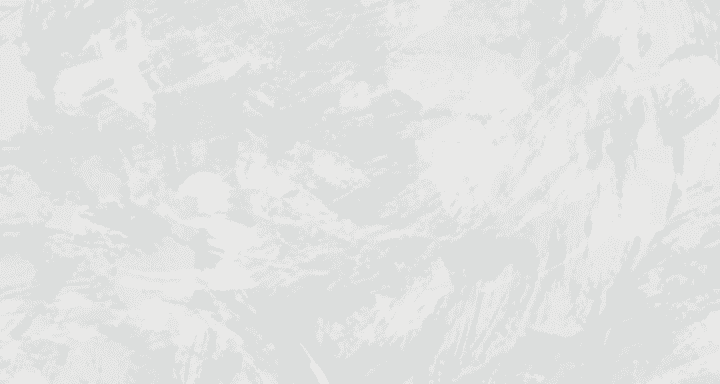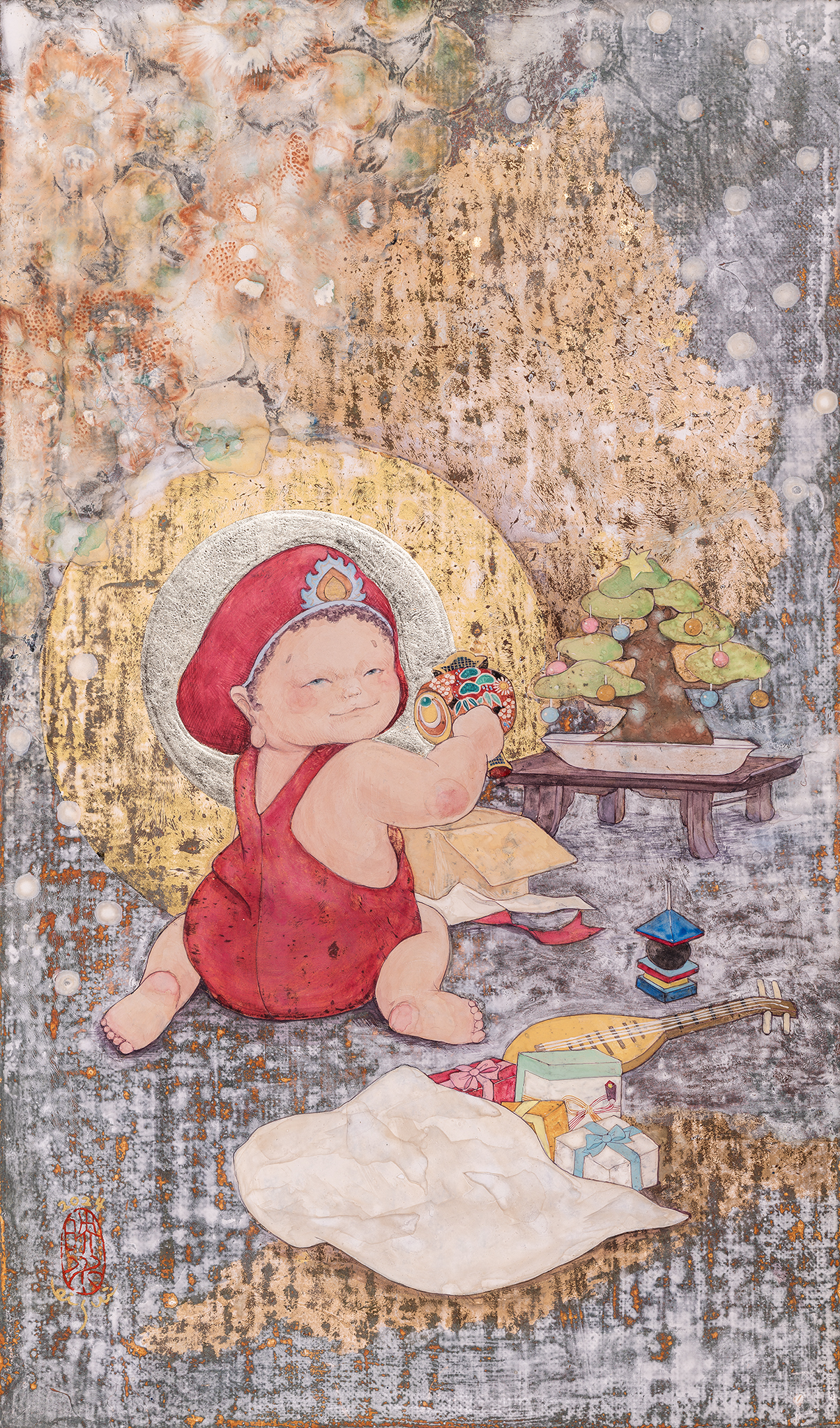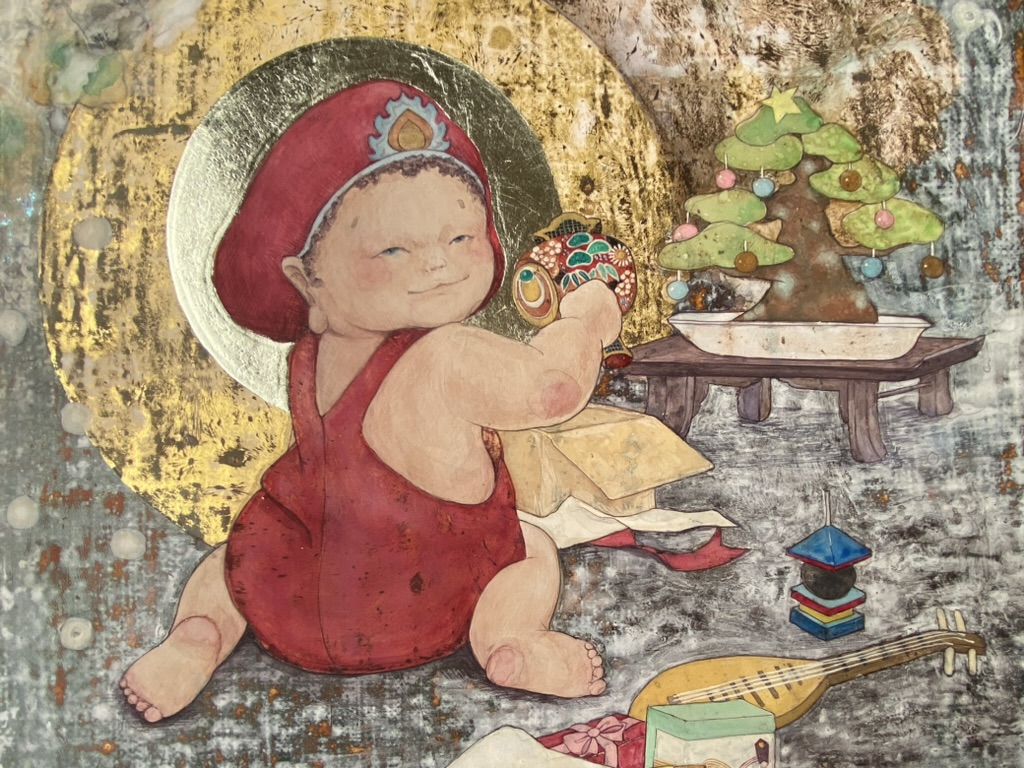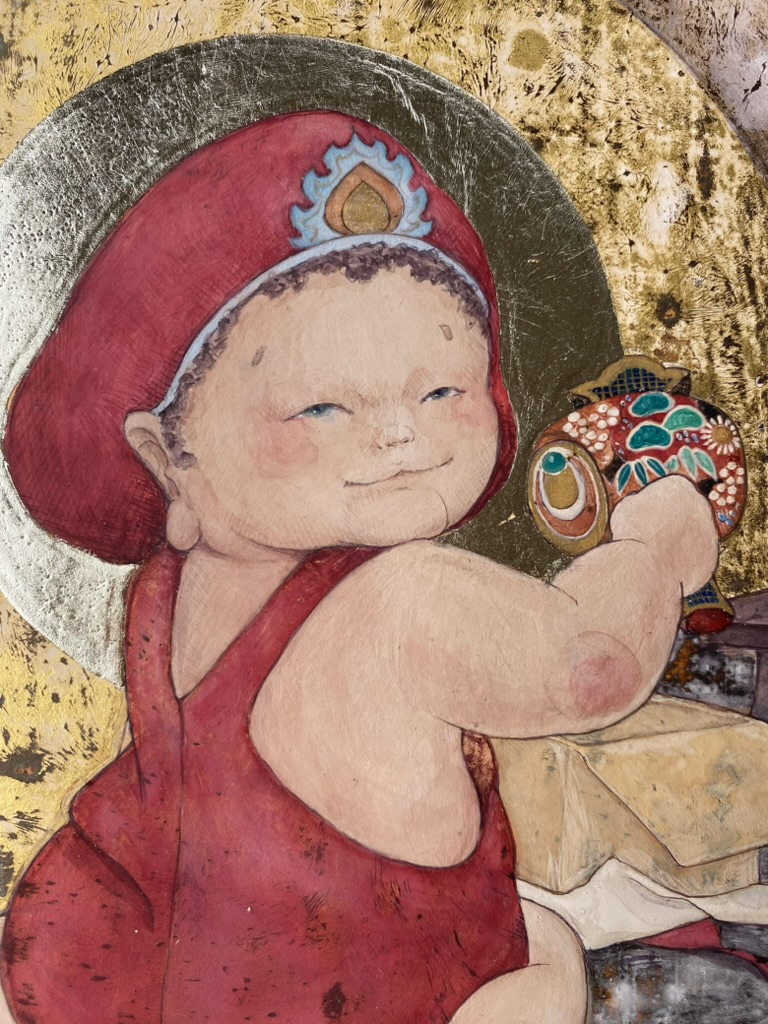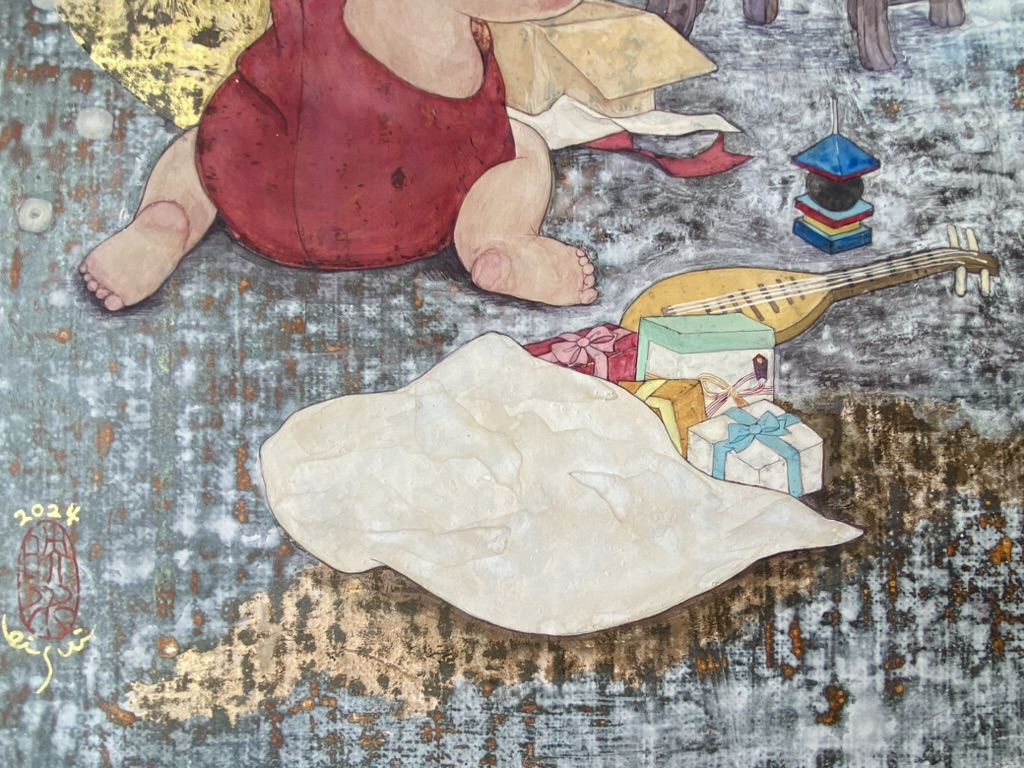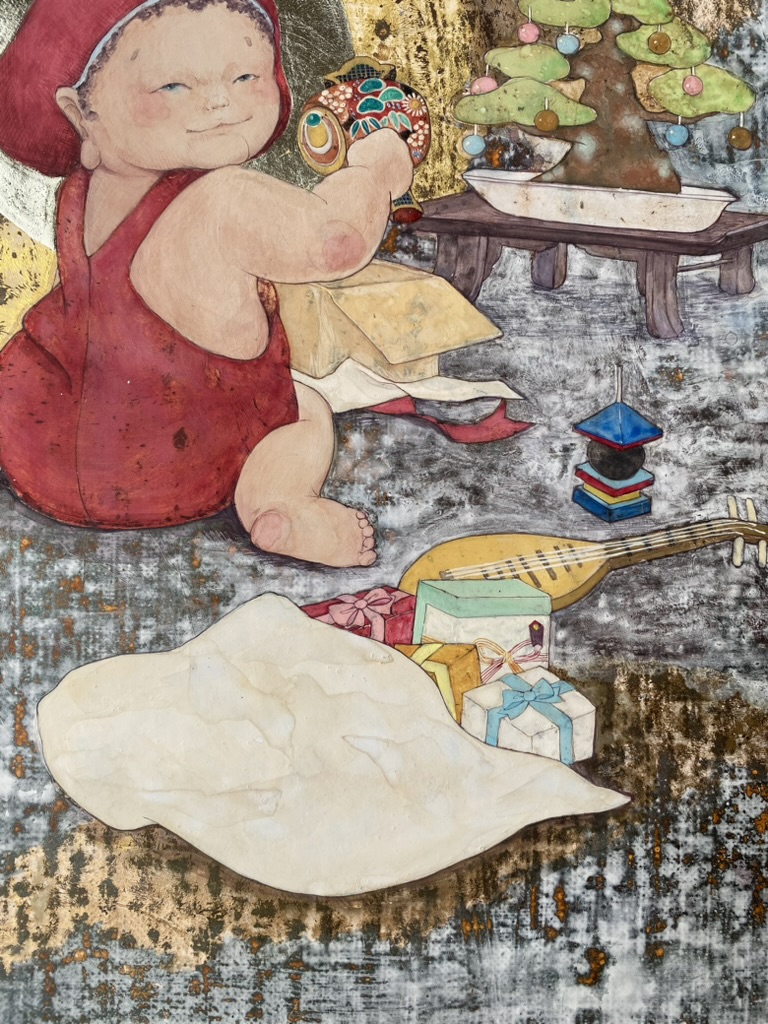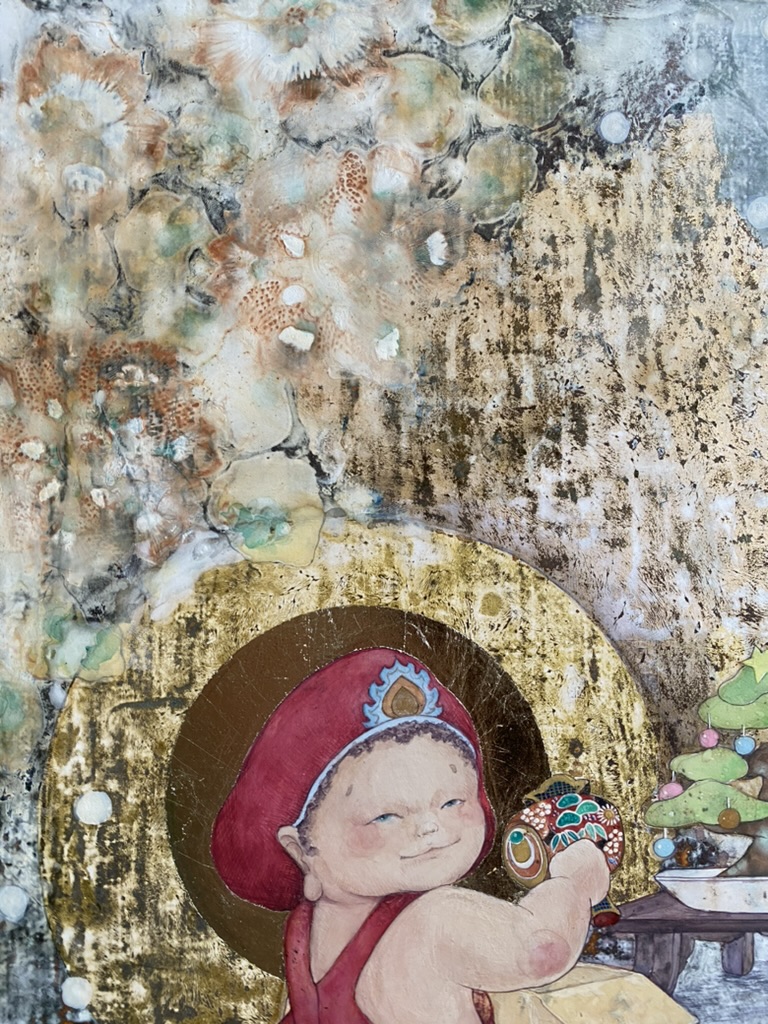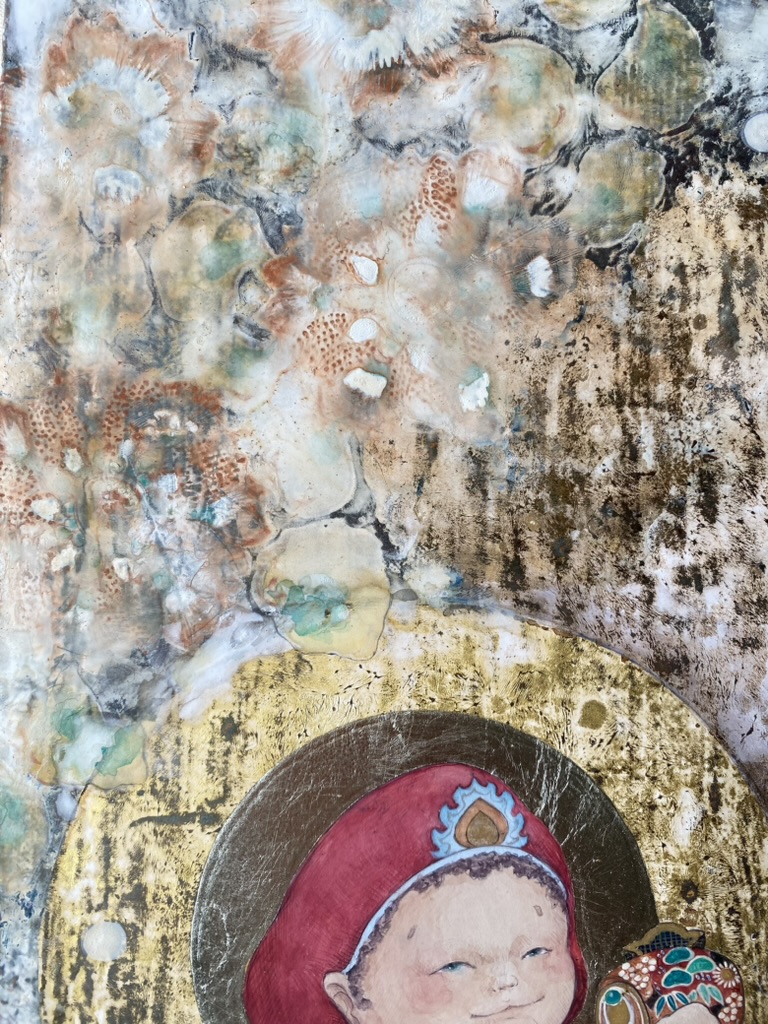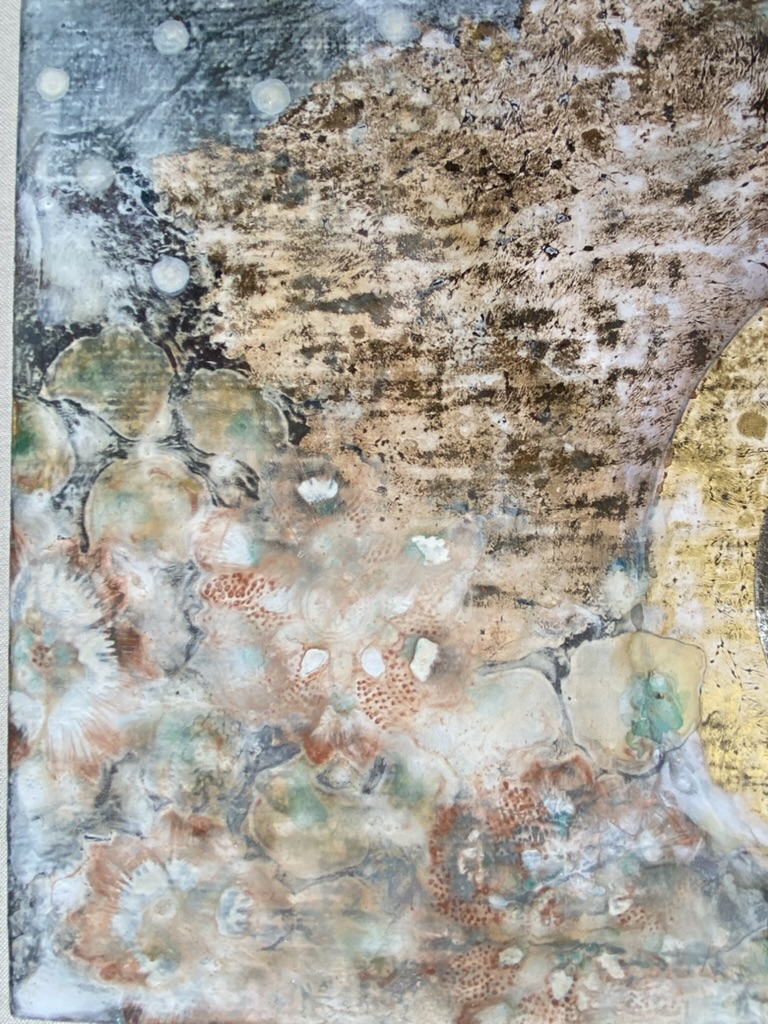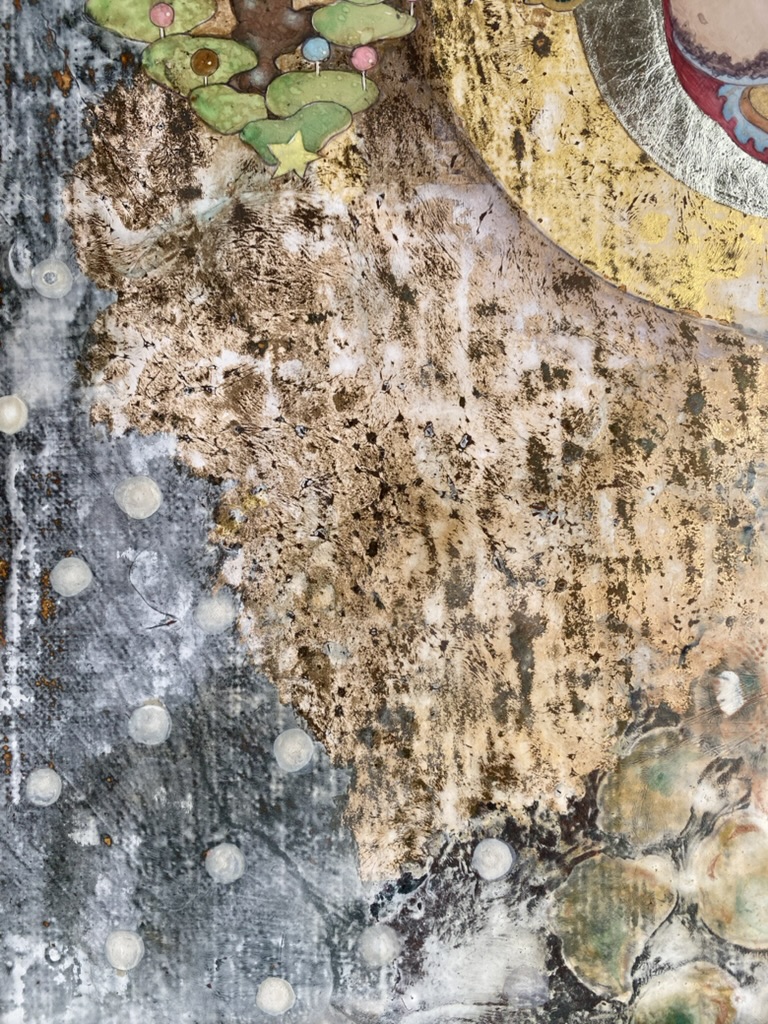Painting
Baby Daikoku
Story
The Baby Series imagines that if even gods are born into the cycle of rebirth, then they too must have had a beginning—an innocent and endearing childhood.
Before they became revered bodhisattvas or divine protectors who made vows to save all sentient beings, perhaps they were once pure, wide-eyed babies, unaware of their future roles.
This series captures such tender moments from their imagined babyhood.
This work features Baby Daikokuten, a baby version of one of Japan’s most beloved gods.
Originally, Daikokuten derives from Mahākāla, a fierce incarnation of the Hindu god Shiva.
In Buddhism, Mahākāla became a guardian deity and was later introduced to Japan along with esoteric Buddhism.
There, he syncretized with the native deity Ōkuninushi no Mikoto, and came to be worshipped as one of the Seven Lucky Gods (Shichifukujin), beloved by the public.
While Daikokuten is known primarily as a deity of abundance and harvest—deeply connected to food and prosperity—he also retains aspects of Mahākāla as a god of war and strength.
In this work, I imagine Daikokuten as a baby: chubby cheeks, a round bottom, and an utterly lovable, carefree presence.
Not yet aware of his divine role, he is simply enjoying his babyhood.
This piece was created for an exhibition held during the Christmas season, and you might notice festive elements sprinkled throughout.
Ever since I was a child, I thought Daikokuten—with his red cap, white sack, and smiling face—somehow resembled Santa Claus.
So this time, I decided to intentionally blend these cultural motifs, portraying him as a universally beloved figure who brings joy across traditions.
While Daikokuten is often depicted as a single smiling figure among the Seven Lucky Gods, there is also a rare form called Sanmen Daikokuten—"Three-Faced Daikokuten"—with the faces of Bishamonten and Benzaiten appearing on either side.
In this baby version, I’ve included subtle hints of that transformation to come.
A blue-roofed pagoda and a biwa (lute) appear in the background—symbols associated with Bishamonten and Benzaiten, respectively.
And from his white sack of gifts, the baby Daikokuten pulls out his very first treasure: the uchide-no-kozuchi, the legendary mallet said to grant any wish.
This piece is filled with icons and elements drawn from Buddhist and Shinto mythology.
I hope viewers will enjoy discovering and interpreting these details woven into the story of Baby Daikokuten.
Before they became revered bodhisattvas or divine protectors who made vows to save all sentient beings, perhaps they were once pure, wide-eyed babies, unaware of their future roles.
This series captures such tender moments from their imagined babyhood.
This work features Baby Daikokuten, a baby version of one of Japan’s most beloved gods.
Originally, Daikokuten derives from Mahākāla, a fierce incarnation of the Hindu god Shiva.
In Buddhism, Mahākāla became a guardian deity and was later introduced to Japan along with esoteric Buddhism.
There, he syncretized with the native deity Ōkuninushi no Mikoto, and came to be worshipped as one of the Seven Lucky Gods (Shichifukujin), beloved by the public.
While Daikokuten is known primarily as a deity of abundance and harvest—deeply connected to food and prosperity—he also retains aspects of Mahākāla as a god of war and strength.
In this work, I imagine Daikokuten as a baby: chubby cheeks, a round bottom, and an utterly lovable, carefree presence.
Not yet aware of his divine role, he is simply enjoying his babyhood.
This piece was created for an exhibition held during the Christmas season, and you might notice festive elements sprinkled throughout.
Ever since I was a child, I thought Daikokuten—with his red cap, white sack, and smiling face—somehow resembled Santa Claus.
So this time, I decided to intentionally blend these cultural motifs, portraying him as a universally beloved figure who brings joy across traditions.
While Daikokuten is often depicted as a single smiling figure among the Seven Lucky Gods, there is also a rare form called Sanmen Daikokuten—"Three-Faced Daikokuten"—with the faces of Bishamonten and Benzaiten appearing on either side.
In this baby version, I’ve included subtle hints of that transformation to come.
A blue-roofed pagoda and a biwa (lute) appear in the background—symbols associated with Bishamonten and Benzaiten, respectively.
And from his white sack of gifts, the baby Daikokuten pulls out his very first treasure: the uchide-no-kozuchi, the legendary mallet said to grant any wish.
This piece is filled with icons and elements drawn from Buddhist and Shinto mythology.
I hope viewers will enjoy discovering and interpreting these details woven into the story of Baby Daikokuten.
Summary
Baby Daikoku
Production year:2024
Media: Wood panel, soil, linen, Japanese tube paint, acrylic emulsion, gold leaf, water gold leaf, brass foil Tamamushi leaf
Size: M6
Private Collection
Please contact us by Email.
Please feel free to contact us for more information about our activities and works.


